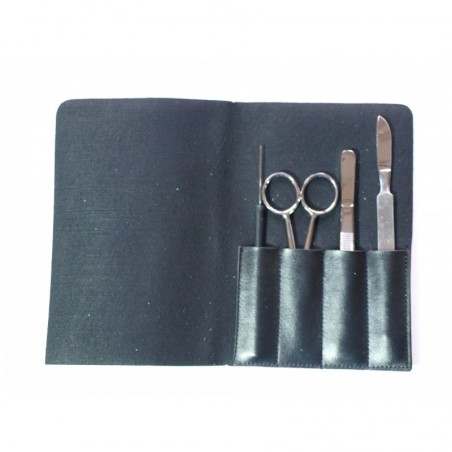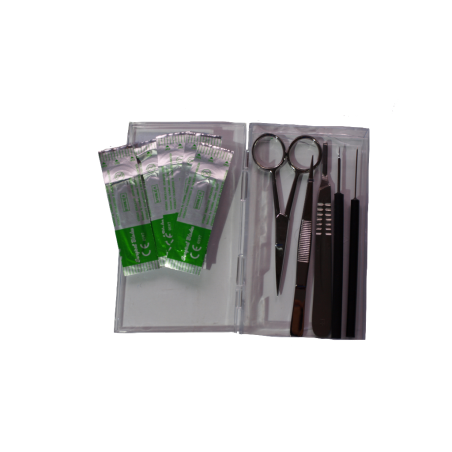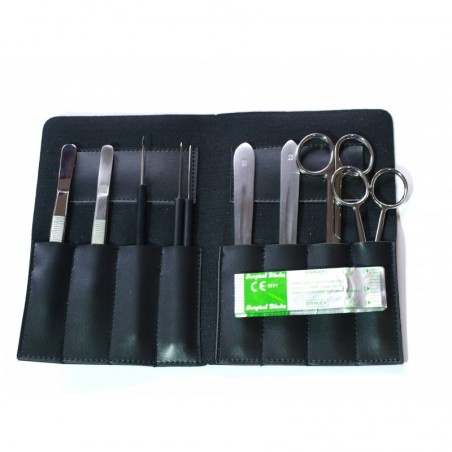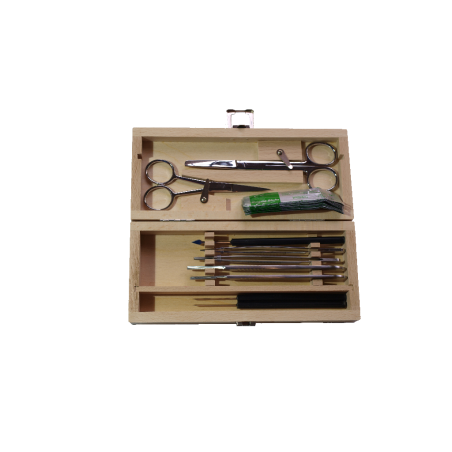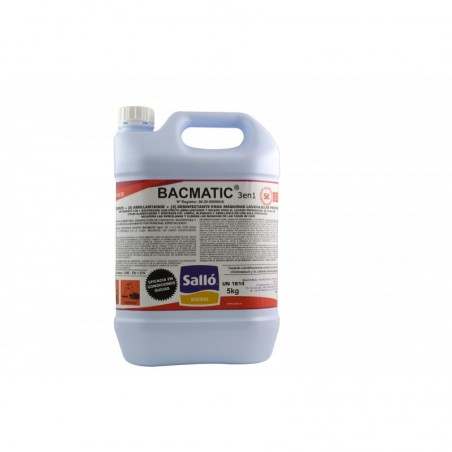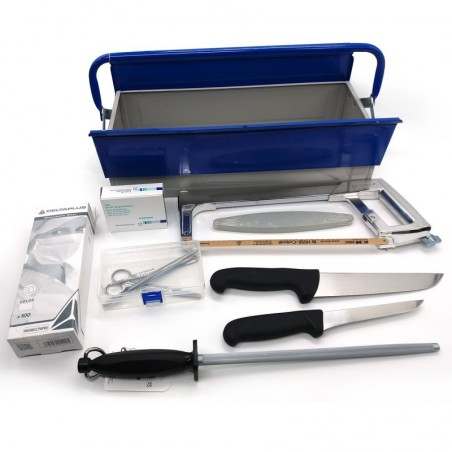Assays available:
Bacterial culture

- Isolation of live organisms
- Pasteurella multocida Type D (not always present)
- Bordetella bronchiseptica (primary concern)
- Sample types: Lungs, nasal swab
- Pros:
- Bacteria is easy to grow in 1 day.
- Easy to do in any lab (including in-house).
- Relative low cost.
- Cons:
- Often find other secondary bacterial infections
- Target lung only for cases with pneumonia.
- Pigs previously treated with antibiotics can prevent bacterial growth.
Antimicrobial susceptibility
- Tests in vitro ability of live organism to grow under specific concentrations of different antimicrobials.
- Sample types: Lungs, nasal swab
- Pros:
- Identification of susceptibility or resistance of each specific isolate to common antimicrobials.
- Cons:
- Requires bacterial isolates
- In vitro testing may be slightly different than in vivo results.
- Some specific antimicrobials may not be tested or require separate, special testing.
- Moderate cost.
Gross necropsy of snouts
- Evaluate nasal turbinates
- Transverse section of snout
- At level of 1st or 2nd premolar
- Score space between turbinate and wall
- Score deviations of septum
- Sample types: nose from skull
- Pros:
- Associate bacterial presence with tissue damage.
- Evaluation of severity of disease and chronicity of infection.
- Cons:
- Unable to confirm B. bronchiseptica as only causative agent.
Result interpretation:
Bacterial culture
- Purity:
- Pure growth: highly suggestive of disease contributor (especially with B. bronchiseptica)
- Mixed growth: questionable value.
- Amount:
- High: highly suggestive of disease contributor.
- Moderate: variable interpretation.
- Low: questionable value (could be contaminant).
- No growth: Animal possibly previously treated with antibiotics or not significant contributor.
Antimicrobial susceptibility:
- Susceptible: possible good choice for treatment if antimicrobial can reach target tissue.
- Resistant: select different antimicrobial.
- MIC: MICs are done to ensure antimicrobial selected achieves the listed MIC value in the target organ.
Gross necropsy of snout:
- European Pharmacopoeia
- Turbinate scores for each of 4 scrolls (16 points maximum)
- 0 = No atrophy
- 1 = Mild atrophy (< 50% scroll lost)
- 2 = Moderate atrophy (> 50% scroll lost)
- 3 = Severe atrophy (Scroll bone is straight)
- 4 = Very severe atrophy (No scroll left)
- Septal deviation (2 points maximum)
- 0 = No deviation
- 1 = Mild deviation
- 2 = Severe deviation
- Total score (turbinates + septal = 18 points maximum)
- Grade 1 = 0-4 points
- Grade 2 = 4-8 points
- Grade 3 = >8 points
- Turbinate scores for each of 4 scrolls (16 points maximum)

Scenarios:
Routine slaughter check:
- Obtain 30 snouts from pigs gone to slaughter and evaluate nasal turbinates and septums for atrophic rhinitis
- Use European Pharmacopoeia approach (most clinically relevant result)
- Do nasal swabs to culture for B. bronchiseptica
6-week-old piglets with sneezing:
- Collect 10 nasal swabs from sneezing pigs
- Culture swabs for B. bronchiseptica and P. multocida type D
20-week-old pigs with deviated septum
- Collect 10 nasal swabs from affected 20-week-old pigs
- Collect 20 nasal swabs from 6–8-week-old pigs to try to identify earlier infection
- Culture all swabs for B. bronchiseptica and P. multocida type D






